By Title By Author By Country/Region By Keyword

Journal Article
Making complementary agricultural resources, technologies, and services more gender-responsive

Journal Article
Educational impacts of an unconditional cash transfer program in Mali
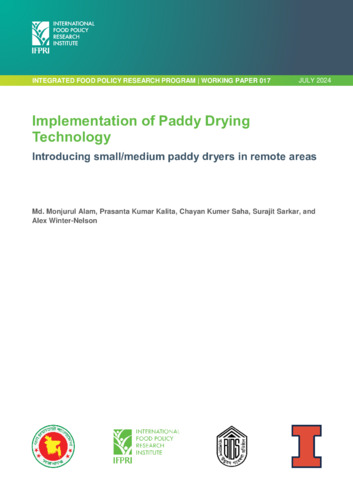
Working Paper
Implementation of paddy drying technology: Introducing small/medium paddy dryers in remote areas
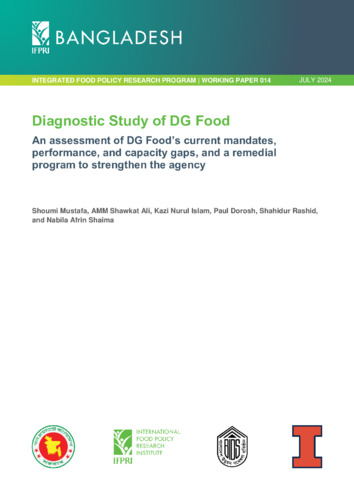
Working Paper
Diagnostic study of DG Food: An assessment of DG Food’s current mandates, performance, and capacity gaps, and a remedial program to strengthen the agency
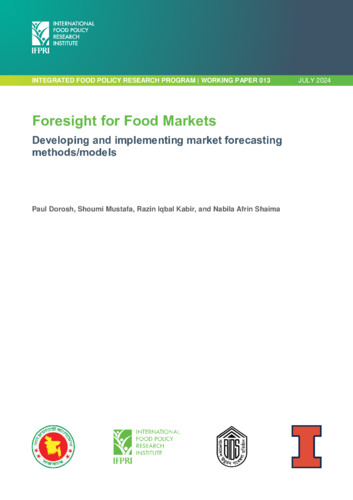
Working Paper
Foresight for food markets: Developing and implementing market forecasting methods/models
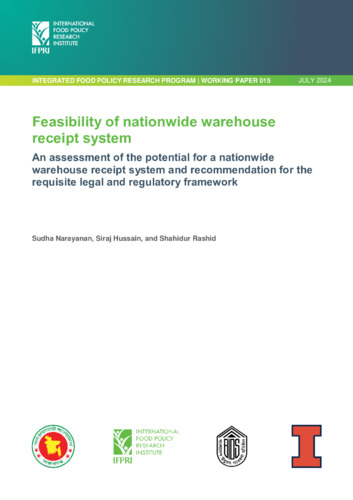
Working Paper
Feasibility of nationwide warehouse receipt system: An assessment of the potential for a nationwide warehouse receipt system and recommendation for the requisite legal and regulatory framework
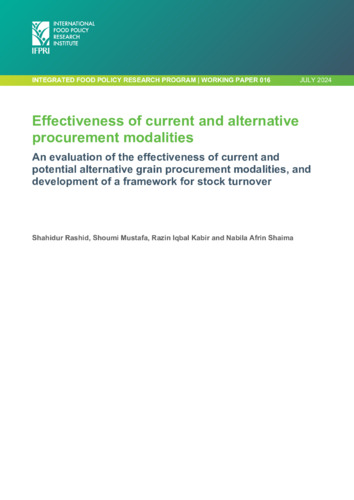
Working Paper
Effectiveness of current and alternative procurement modalities: An evaluation of the effectiveness of current and potential alternative grain procurement modalities, and development of a framework for stock turnover

Abstract
An assessment of dietary patterns and micronutrient intake among farming adults in Rural Sri Lanka

Abstract
Gender disparities in food shopping patterns: Evidence from rural Bangladesh, India, and Nepal
…more
Veettil, Prakashan Chellattan
Report
Innovation process tracing assessment: Methodological approach and guiding principles

Abstract
Strengthening delivery platforms of national nutrition programs in subnational geographies in India improved coverage of interventions and child growth

Abstract
Involving influential men’s groups to promote maternal and child nutrition practices increased diet diversity and egg consumption despite rising insecurity in the Sahel
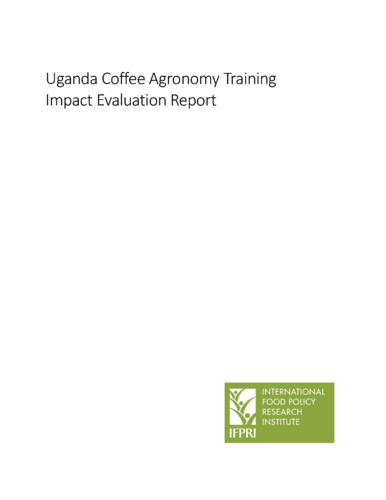
Report
Uganda coffee agronomy training: Impact evaluation report
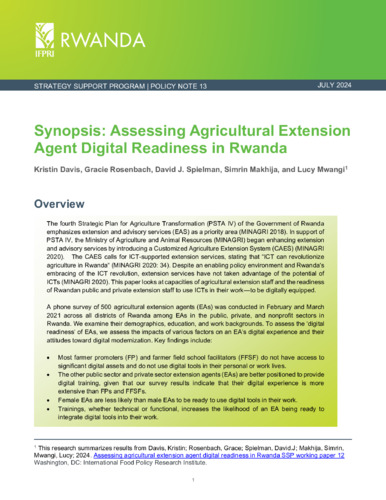
Brief
Synopsis: Assessing agricultural extension agent digital readiness in Rwanda

Abstract
Addressing parent-adolescent roles and interactions to improve adolescents’ diets in Ethiopia

Abstract
Understanding patterns of receipt and consumption of IFA supplements during pregnancy: Empirical considerations for measuring coverage

Abstract
The relationship between preterm and small for gestational age on child cognition during school-age years

Abstract
Preconception micronutrient supplementation positively affects offspring cognition at 10–11 years of age: A randomized controlled trial in Vietnam

Abstract
Enhanced quality of nutrition services during antenatal care through interventions to improve maternal nutrition in Bangladesh, Burkina Faso, Ethiopia, and India
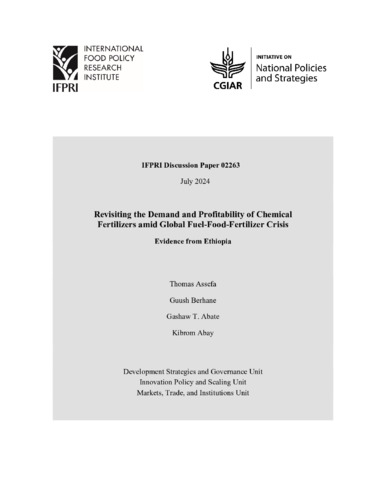
Working Paper
Revisiting the demand and profitability of chemical fertilizers amid global fuel-food-fertilizer crisis: Evidence from Ethiopia
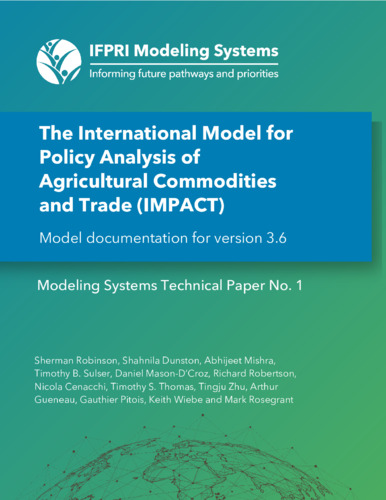
Report
The International Model for Policy Analysis of Agricultural Commodities and Trade (IMPACT): Model documentation for version 3.6
…more
Pitois, Gauthier; Wiebe, Keith D.; Rosegrant, Mark W.
Blog Post
Introducing the BMC Series SDG Editorial Board Members: Taddese Zerfu

Brief
Synopsis: Enhancing smallholder farmers’ profitability through increased crop commercialization in Rwanda
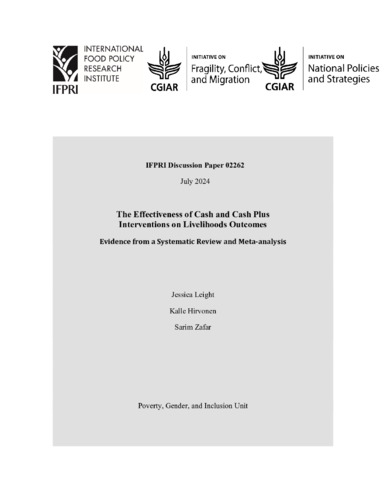
Working Paper
The effectiveness of cash and cash plus interventions on livelihoods outcomes: Evidence from a systematic review and meta-analysis

Journal Article
Effects of a large-scale alcohol ban on population-level alcohol intake, weight, blood pressure, blood glucose, and domestic violence in India: A quasi-experimental population-based study

Journal Article
Understanding differential reductions in undernutrition among districts in Rwanda through the perspectives of mid‐level and community actors on policy commitment and policy coherence

Journal Article
A multi-sectoral community development intervention has a positive impact on diet quality and growth in school-age children in rural Nepal

Journal Article
The impact of large-scale agricultural investments in low-income economies

Journal Article
It’s all in the stars: The Chinese zodiac and the effects of parental investments on offspring’s cognitive and noncognitive skill development

Book Chapter
Demographie

Journal Article
Civil conflict, cash transfers, and child nutrition in Yemen

Abstract
Can Growth Monitoring and Promotion (GMP) improve child growth and development? A critical review of the epidemiological foundations

Abstract
The cost and cost-effectiveness of integrating wasting prevention into screening in facility- and community-based platforms in Burkina Faso and Mali

Abstract
Changes in norms about infant and young child feeding in rural Bangladesh during the Alive & Thrive Initiative

Abstract
Diet quality among mothers and children in India: Roles of social and behavior change communication and nutrition-sensitive social protection programs

Abstract
Achieving sustainability and scalability of a large-scale prenatal cash and food transfer intervention in Bangladesh

Abstract
Utilization of maternal nutrition services during antenatal care and its association with nutrition practices in Bangladesh, Burkina Faso, Ethiopia, and India
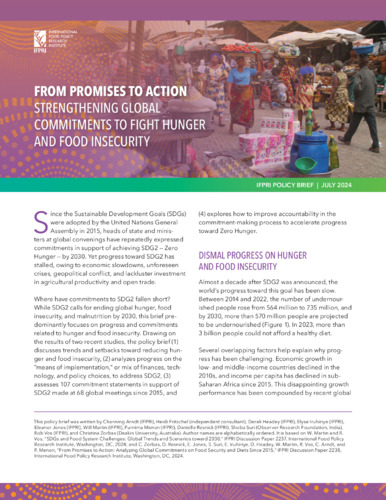
Brief
From promises to action: Strengthening global commitments to fight hunger and food insecurity
…more
Zorbas, Christina
Abstract
Consumption, sources, and perceptions of unhealthy foods Among adults and adolescents in rural South Asia
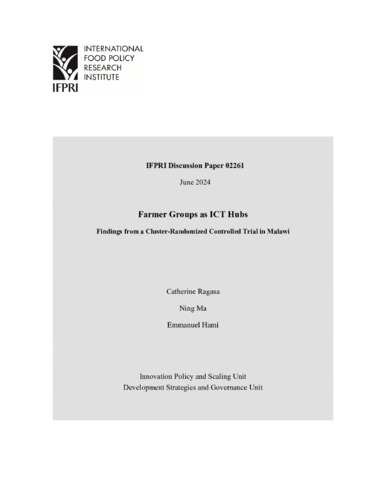
Working Paper
Farmer groups as ICT Hubs: Findings from a cluster-randomized controlled trial in Malawi

Journal Article
We need to know the economic impacts of Sudan’s ongoing conflict

Journal Article
The impact of excluding adverse neonatal outcomes on the creation of gestational weight gain charts among women from low- and middle-income countries with normal and overweight BMI
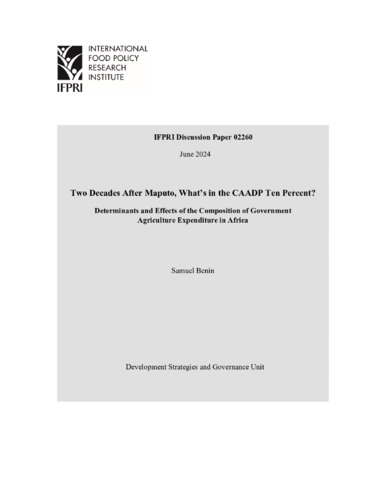
Working Paper
Two decades after Maputo, What’s in the CAADP ten percent? Determinants and effects of the composition of government agriculture expenditure in Africa

Report
The true costs of food in Kenya and Vietnam: A conceptual framework

Data Paper
Myanmar Agricultural Performance Survey Round Four: Note on Sample Characteristics and Weighting

Working Paper
Africa cannot achieve the Malabo Declaration commitments: Statistical impossibility or logical fallacy
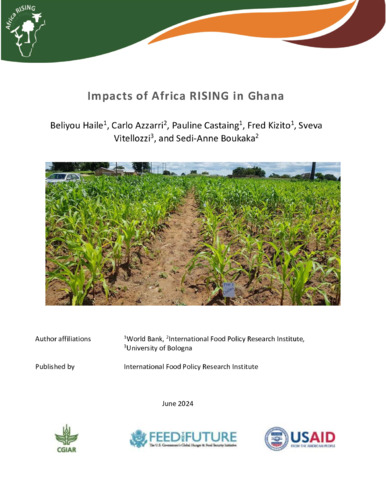
Report
Impacts of Africa RISING in Ghana
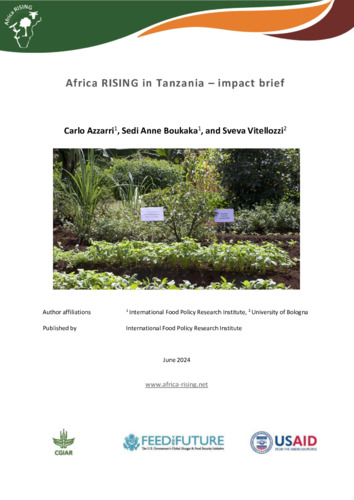
Brief
Africa RISING in Tanzania: Impact brief
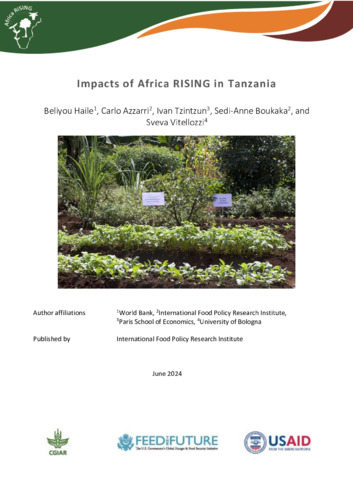
Report
Impacts of Africa RISING in Tanzania
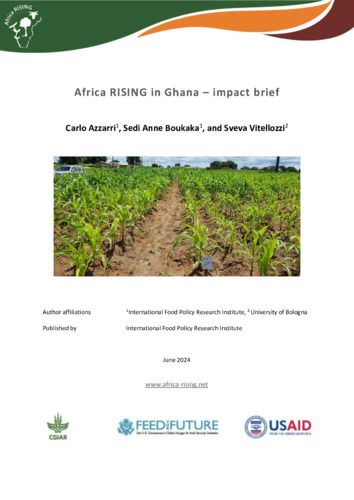
Brief



